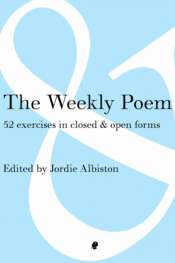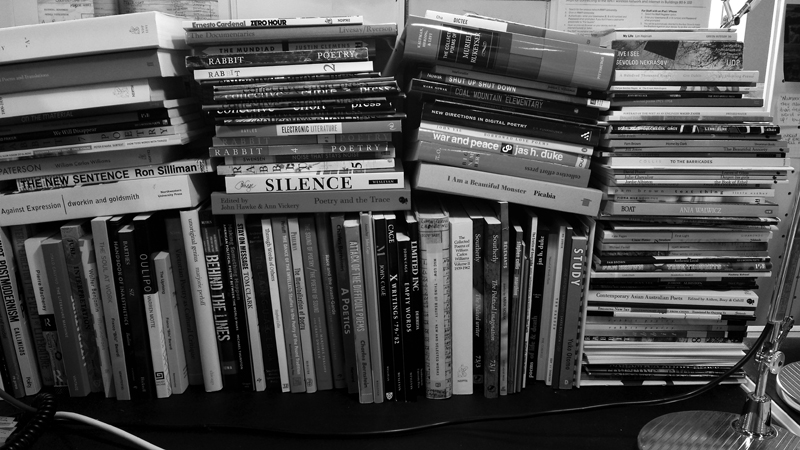‘This machine surrounds hatred and forces it to surrender’ were the words inscribed on the banjo of American folk legend and activist Pete Seeger, who died at 94 in late January 2014. Reading the tributes to Seeger, I was struck by a recurrent theme: his moral courage, which he lived out unrelentingly across a lifetime. Commenting on the ‘not common behaviours’ which made his life exemplary, a New Yorker post by biographer Alec Wilkinson wrote of ‘his insistence on his right to entertain his own conscience’.
That ‘insistence’ began early; Seeger preferring to face jail rather than invoke the Fifth Amendment defense when called to testify before the House Un-American Activities Committee in 1955, and refusing to name personal and political associations. He avoided jail only on appeal in 1962. In October 2011 he was among the leaders of the ‘Occupy Wall Street’ march.
The tributes also led me to think of the ways in which other high-profile figures in popular music – Bob Marley and Bob Dylan – have in the past century harnessed, insisting on their same right, the active, lyrical power of poetic language to express moral and political dissent.
This is one of the reasons for the diminished audience for poetry in the 21st century; its audience, lean as it has often been, has been further subsumed by other arts. Of course, at the same time, the meld of lyric and instrument harks to the days of the lyre, the bard and troubadour, lyric’s origins and tradition.
Yet there is an essence in poetry, where a poem can be a pure or unique instance of language (to use Paul Celan’s thinking), giving it the capability to be a stand-alone language of resistance. It has been often, in the works of accomplished poets, a language of essence, able to name what is essential to the fully lived human experience, and what depraves it.
There are abundant examples. Celan himself – in the words of translator Katherine Washburn, after being earlier a ‘pure poet of the intoxicating line’, and in the steep of the Surrealists – became ‘heir and hostage to the most lacerating of human memories.’ As a Romanian-born Jew, Celan worked in a forced labour camp for 18 months from 1942-1944. Both his parents died in Nazi camps. Just one excerpt here, from his 1952 book, Poppy and Memory:
Black milk of daybreak we drink you at night
we drink you at noon death is a master from Germany
we drink you at sundown and in the morning we drink and we drink you
death is a master from Germany his eyes are blue
(trans. Michael Hamburger)
And another, from the Palestinian poet Mahmoud Darwish, from ‘Victim No. 48’:
He was lying dead on a stone.
They found in his chest the moon and a rose lantern.
They found in his pockets a few coins,
A box of matches and a travel permit.
He had tattoos on his arms.
His mother kissed him
and cried for a year.
Boxthorn tangled in his eyes.
And it was dark…
(trans. Abdullah al-Udhari)
Both poets wrote other poems with dissenting force rising from more opaque and abstracted language. This is a cardinal point: the poetic force is not reliant on a singular poetic or only poetry that has an immediacy or transparency of meaning. It can be present in all kinds of poetry, including those whose language is complex, or difficult to access and decode. In fact, a capacity for ambiguity and subtlety – and an interrogation of the ability to speak at all – might be exactly what is required in such a poem.
This force is pressured by the complexities of linguistic play; pressured by the porous intricacies between poet, poetic voice and subject; and between the poem and the reader. Where it is calculable about political dissent, it can be pressured by multiple, insidious forces which need to be traced. A lucid and intelligent essay on this subject, ‘Poems from Guantanamo: Testimonal Literature and The Politics of Genre’, by Nina Philadelphoff-Puren, is part of the selection by editors Ann Vickery and John Hawke in their 2014 Poetry and the Trace (Puncher & Wattmann). It is worth reading.
The audience for poetry of moral witnessing has not always been, as it is usually today, small. During many socially traumatised times in history, in fact, the ability of poetry to express human conscience has seen it embraced as significant to a massed community.
The poets of these territories and events have also been embraced as public figures whose poetry and project is important to their community of origin: Yannis Ritsos, Pablo Neruda, Anna Akhmatova, Federico Lorca, Nazim Hizmet, Darwish and Miroslav Holub are 20th-century examples. Poets such as W.H. Auden (in poems which include ‘Epitaph on a Tyrant’ and ‘Refugee Blues’) or Wislawa Szymborska (‘Reality Demands’, ‘The End and the Beginning’) exemplify the duty and capacity of a poet to respond to their world, as human community, at large.
Also important about these poets’ contributions is their works’ reinforcement of humanitarian values – their insistence on nobler attributes against a certain era’s atrocities is distilled for the record. The poems are not only for their times. In these cases, the poet is not just a poet, but also an auditor of communal memory. The hook of poetry into the greater communal, in times where a society is embattled and pervaded by the injustices, remains alive.
The communal uptake in recent years of a traditional folk-couplet form, the landay, by Pashtun women in Afghanistan, demonstrates this. An extensive 2013 article inPoetry Magazine relays the story behind the contemporary adoption of this short, oral poetic form –its only rule is syllabic count, a first line of nine, 13 for the second – among Pashtun women living in Taliban strongholds in Afghanistan.
The author, New York poet and Guggenheim Fellow Eliza Grizwold, in her research collected examples of these modern landays on trips beginning in 2012 and interviewed their disseminators. These women create new landays or re-write existing ones, and go on to share them, at the highest personal risk.
Translated by Grizwold, with the assistance of Pashtun speakers and translators, some examples:
You sold me to an old man, father.
May God destroy your home, I was your daughter.
*
I dream I am the president.
When I awake, I am the beggar of the world.
*
The drones have come to the Afghan sky.
The mouths of our rockets will answer in reply.
Importantly, the poems are understood to be anonymous and collectively owned; usually, and as a form of protection against retribution, no woman can be held directly responsible for their creation. Many are a condemnation of and resistance to the country’s absorption of an American presence, or a rallying against gendered oppressions. If shared in person, it must be in secret, with landays recited (usually sung, a proscribed practice) privately, woman to woman, or among gatherings of women, including in refugee camps. Grizwold also reported on a secret literary circle, with a telephone hotline, which could be used for the sharing of the poems with those who were unable to attend in person; and to mentor younger women in the form. The landays can also be ribald:
Unlucky you who didn’t come last night,
I took the bed’s hard wood post for a man.
Certainly, as Grizwold comments, the women’s landays ‘frustrate any facile image of a Pashtun woman as nothing but a mute ghost beneath a blue burqa.’
Turning to Australia, there can be no doubt that travesties of human rights prevail here at this time. Topically, there has been the descent into atrocity again with the violent death of Reza Barati and the severe injuries suffered by other asylum-seekers during events on Manus Island this past month.
‘A sheet of paper is to me what the forest is to a man on the run,’ wrote Russian poet, political dissident and labour-camp internee, Andrei Sinyavsky, in his collection of writings, A Voice from the Chorus, made during his imprisonment of nearly seven years. Almost incredibly, it is an observation which might hold acute relevance to the experiences of asylum-seekers detained at this time under Australian Government auspices.
Aside from the refugee-rights issues, there are the indictable inequalities and histories experienced by Australia’s indigenous, poor and marginalised. For the Australian poets who might want to take them up, these ills inevitably mix with the world’s horrors, reminding us that the public resistance of poetry is not bound by a poet’s nationality and place.
Yet there is a troubling issue to be thought through by poets wanting to address the institutional travesties around human rights which prevail in this country. If the poet does not have at least indirect personal association with the impact of an atrocity, then in writing poetry of it, they assume instead the place of the bearing of witness. This can easily come across as helpless (if heartfelt), at least even a little indulgent, hand-wringing. And yet a poem will be a good poem, not because the reader can read the poet’s own experience in it, necessarily, but because of the new ‘thing’ that it makes, or colludes to make, of our immediate world.
This has made me think of what examples there might be of Australian poetry which faces up to the task of addressing such injustices – and of those poems which fail in this.
This species of inferior poem, executed glibly, inanely or just palely, falters for a number of reasons. Often, its inadequacy is due to a blatancy of emotional response that doesn’t impel the reader to a deeper comprehension of what is at stake. Or the poems fail because the poet has begun the task without an insight into why they are writing them, without thinking through why they might have the right to do so – and the densities of that right. Where there is a simplistic conflation between an event of horror and the poet’s assumption of the right – and ability – to speak of it, there goes much of this poetry. This can be the case, whether the horror has been directly/indirectly experienced, or is being ‘witnessed’.
On the other hand, where poems of moral conscience succeed, what they essentially do is remind us, intelligently and movingly, of our own humanity – and potentially too, of whatever obligations (whether civic or private) might subsist for us. Strangely, the test for the worth of such a poem might be that it speaks to our own individuality, not to agendas.
There is a strong precedent of poetry by Australian poets which has been able to ‘bear witness’ and distill communal and emotive undertows of dissent and resistance: A.D. Hope’s ‘Inscription for a War’, Robert Adamson’s ‘Canticle for the Bicentennial Dead’, Robert Harris’s ‘dolekeeping rag’, Bruce Dawe’s ‘Homecoming’, much of Oodjeroo’s oeuvre (including ‘Municipal Gum’) and Kevin Gilbert’s (‘The Soldier’s Reward’); also in a range of subjects in the poetry of Judith Wright.
I also thought of poems whose achievement and timing was endowed by a more solitary, arguably more disturbing, stance: Francis Webb’s ‘End of the Picnic’, with its unsettling and unsettled ending; Dorothy Hewett’s ‘The Hidden Journey’; Vincent Buckley’s ‘Hunger Strike’, on the IRA hunger-strikers, including Bobby Sands (and which was written at a time of vehement anti-IRA sentiment here and abroad); the destabilising tumult of Gwen Harwood’s ‘Night Thoughts: Baby & Demon’.
Poetry of ‘resistance’ cannot always be a galvanisation of communal trending, the audience already captured. In this, poetry at nub is the resisting force – to clichéd thoughts and values (of whatever political bent), to unexamined perceptions of events, histories and the self’s relations to them. Even the concepts of ‘resistance’ and ‘dissent’ cannot be colonised, but remain open to disruption and unpredictability.
Among examples of a conscious nature in more contemporary Australian poems – again, some of these speak in the light of a communal dissent – is Kevin Brophy’s ‘Salt’. From his 2013 volume,
Walking,: New & Selected Poems., he addresses here, humanely yet sharply, the boat-refugee issue, and without the flaws of either false conflation or sentiment. Last year’s
extended Mundiad collection by Justin Clemens, for all its satirical reflexions and at times uproarious wit, can also be seen, as a commentary on contemporary values, as politically savage. And the poetry of Lionel Fogarty remains idiosyncratic, un-pinnable, disruptive – in its agitating subject matter and its defiance of usual syntactical and grammatical ‘law’.
Tangentially, I also think of Michael Farrell’s 2011 ‘Motherlogue’, with its strange, unhinging enunciation of an apparently indigenous woman’s urban existence and her adaptions, some perverse, some subversively authoritative, to displacement. The poem appears, simultaneously, to be inlaid with inherent and anxious questions about the politic of language and voice, about their ownership, appropriation and disenfranchisements.
Different but still curious questions are also raised in poems such as Emma Lew’s ‘Lesson’ and Iraqi-Australian poet Adeeb Kamal Ad-Deen’s ‘Something Wrong’.
A poem by Alison Croggon, part 3 of a cycle titled ‘Possible Elegies’, is compacted in 47 longish-lines with no stanza breaks. Croggon’s poetry often combines subject matter of an ambitious scale with an ability to reveal its intimate and visceral nature. Her poetic intention, its wreaking of language, is highly conscientious. It addresses love, its imperative co-existent with its frailties and complexity, and the atrocities that would erase it. It also, in a meta-sense for me, offers a possible framework of comprehension to approach other poems that insist on the right to ‘entertain’ one’s conscience, as poet or reader.
The poem is also an inheritor, to my mind, of the injunction that Auden’s ‘The Cave of Making’ set on poetry:
but we shan’t, not since Stalin or Hitler,
trust ourselves ever again: we know that, subjectively,
all is possible.




